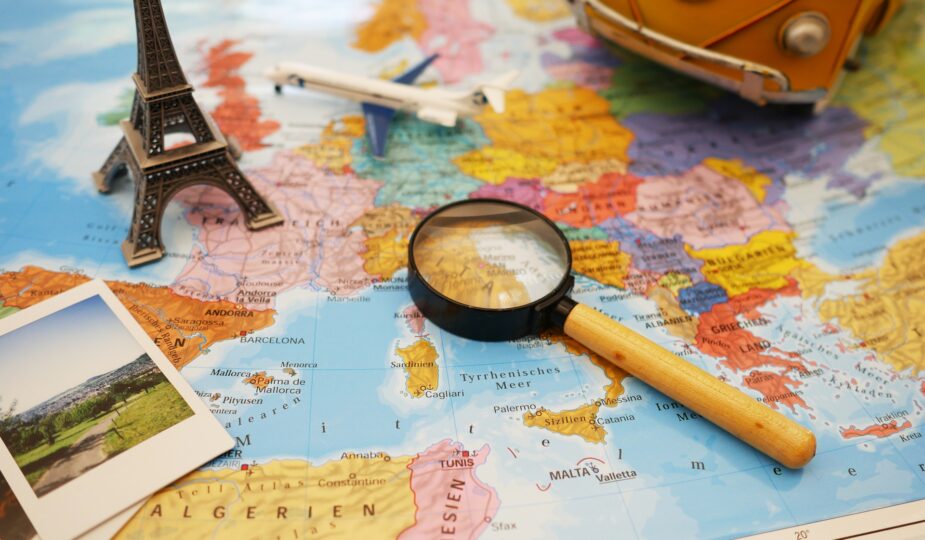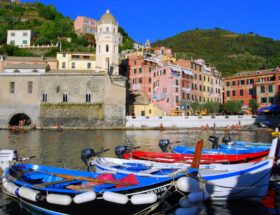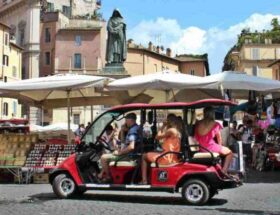When planning a trip to Italy there are a number of steps that we follow with our clients. So, whether you are planning on working with us or trying to plan on your own, these are some of the most important questions that need answering, that will ultimately make the planning process more simplistic and take a lot out stress out of the vacation.
- Exploring the family ‘What?’
What is the inspiration behind the trip?
What do you want to get out of the trip?
What type of experience are you after?
What do you envision when you think of this trip?
What does the perfect day in Italy look like to you while on vacation?
2. When do you want to travel?
Typically, most families want to travel to Italy over their summer break, but Italy is also great in the spring and fall (winter), and also over the festive period. Italy is stunning all year round! The downside of travelling in summer is that:
a. This is when everyone else is travelling, so it gets busy
b. It is hotter than at other times of the year
c. It is generally more expensive
d. Availability is less – not just hotels; but also tours; access to museums, etc; car rentals; train and air tickets
3. How much time do you want to spend in Italy?
On our Italy feature page we outline that 10 days is a good amount of time to spend in Italy, especially for a first visit – this gives you 3 locations to explore adequately and at leisure. Whether you have 7, 10, or 14 days, and depending on how active you are or want to be, will determine whether you spend time in 2, 3 or 4 locations,
4. Must sees
If you already have a predetermined vision of what you want to see when in Italy, not only is this a huge plus when planning your trip to Italy but this will invariably dictate where you stay. We’d suggest that you do some homework, and learn some of the geography of Italy before you sit down to plan. You will be amazed at the number of clients who tell us that during their 10 day vacation they want to see Lake Como, Venice, Cinque Terre, Florence, Tuscany, Rome, Amalfi, Naples, and Pompeii. Its all possible but would be a very, very busy, tiring and somewhat unpleasant vacation in our eyes. Requiring you to have a vacation after your vacation!
You aren’t going to see everything on your first trip, so prioritise those that you really want to see -not what your friends say you should see!
5. Routing
Once you know how long you are staying and what you want to see, you can then plan the route. As we mentioned previously, a 10 day trip for a first time visit is perfect and should have 3 main bases, from which you can explore the surrounding area. These locations should be no more than 3 to 4 hours from the next. This makes for easy transitions on check-out days. You will understand why especially if you have a young family!
6. Accommodation
Like most major cities in the world, a good central location is going to be more expensive than somewhere ‘off the beaten track’. We have learnt that there is no right answer to ‘what does or what should one spend per night?’, as there are so many variables. As a travel advisor we can normally find accommodation whatever the budget, style or configuration. You should ask yourself ‘what style of accommodation are you looking for – luxe, 5 star, solid 4 star?’ And how much time are you planning on spending in the hotel room? It doesn’t make sense to spend thousands of dollars/pounds/euros per night on accommodation, if you plan on exploring the city all day and only sleeping in the room. Some of our clients prefer to spend most of their daily allowance on activities and experiences, rather than on a bed for the night,
Please note that hotel rooms in Italy (and most of Europe to be fair) are generally smaller than America, for instance. So you may need two rooms for a family of four rather than one, to get the type of space you are used to or require. If you search hard enough, you will find that many hotels have apartments as part of their offering or portfolio, and so this option gives you the luxury of more space whilst still being able to use the facilities and amenities that the hotel offers.
7. Budget
We touched on this earlier. There is no right or wrong answer here, as to what constitutes a decent budget for a 7, 10 or 14 day trip. As travel advisors we can generally squeeze ‘the square peg into the round hole’. We know that invariably, something has got to give – Its either sacrificing the size, style or type of the room; less activities (or cheaper options); or less expensive restaurants. But although it is a question many of our clients don’t really know the answer to; haven’t thought of; or try to sidestep , at some point you have to arrive at a comfortable rate per day you are willing to spend or overall trip cost. By asking ‘What is your pain threshold?’ we normally get to an answer very quickly!…… And yes, it is always going to cost more than you thought and no, its not going to cost the same as a similar trip to one you had recently on the States!
8. Activities
It is crucial to determine how important activities are while on vacation and is this shared by ALL in the family? Some family members are more active than others and some prefer more of a cultural, immersive experience than other members of the family. We find that, in order to strike the right balance for everyone in the family, arranging an activity in the morning (or afternoon), every other day, intermingled with some self-guiding options makes for a good mix over the duration of the vacation.
While some travellers adopt a ‘get up and go’ attitude, which leads to full days; others realise that a more relaxed approach, enjoying the Italian food and wine, whilst watching the world go by is more preferable and enjoyable. No matter what approach you take, at the end of the day, taking a passeggiata (where you eat gelato while ambling along the street slowly, feeling Italian for an hour or two) is the best way to enjoy the evening.
It is worth noting that when you are planning activities, a group-shared experience is normally cheaper than a private affair, but unfortunately you are not able to choose who you share the experience with ahead of time , and so if the group is not to your liking – it can be a very long day!
9. Logistics
There is no right or wrong time in the planning process to book your flights. Clients do ask us which comes first? The chicken or the egg? The hotel or the flight? If the vacation is planned well in advance, and there is plenty availability, then flights can be booked after the hotels are booked and hotel bookings can then be moved around to accommodate the flight dates. Some prefer to put the flights in place first, opting for a 2nd choice hotel accommodation option, if their first choice isn’t available to coincide with their flights times. A decent travel advisor will be able to deal with either scenario.
Once on the ground, the options for getting from A to B are numerous in Italy. Italy benefits from an excellent rail network and so getting from one main city to another is quite quick, easy and relatively inexpensive. If your vacation comprises only city stays then a car is not a necessity in Italy, as you can easily rely on cabs or buses to get around. Although our preference to get clients to tours or excursions on time (and with minimal stress) is to arrange transfers with a reputable transfer company. These can often be arranged through the concierge at the hotel, but I will say that they are hugely more expensive that if you or your travel advisor arrange these.
If you are spending some time in the countryside i.e. Tuscany, we would recommend renting a car. The roads are less busy and the drivers outside of the city are generally calmer and more patient. The benefit of having a car is that it gives you more flexibility and allows you to see more. Driving in a number of Italian cities, and along the Amalfi Coast, is not recommended. A big plus for Americans is that Italians drive on the same side of the road. Personally, I think it is all part of the immersive experience and its great to be Italian for a day or two – ignoring road signs, gesticulating at fellow drivers (and pedestrians) and speeding wherever possible. Once you are aware of these unwritten laws, it’s quite easy to fit in!
10. Restaurants
Italy has some of the best restaurants in the world (Massimo Bottura’s Osteria Francescana has been in the top 3 since 2014) and most would agree that it has the best food in the world, so its really just about what and where you want to eat. For many, this is as important or harder to decide upon than your accommodation. Whether its just a casual slice of pizza on the run or a Michelin-starred affair, a travel advisor is probably best at advising you on latest trends and best options. Doing your own planning, we suggest doing research in advance. Also, don’t worry, if you are eating in a big city, most proprietors can speak English. Which leads us nicely to….
11. Language
Although this is not something that we travel advisors really consider in any great depth when we are planning a trip to Italy, but it is worth mentioning because sending you into a remote part of the country can change your experience and vacation drastically.
In the popular tourist spots most of those involved in the hospitality or travel industry can speak English. Just off the beaten track you will always find someone who speaks English or enough to get by. In Italy most Italians have had 6 to 12 years of English tuition – they might not speak it well or remember all of it, but you should be understood enough if you speak slowly. Its amazing how much or how quickly Italians understand when you bring a wad of bank notes out and into the conversation!
Italians are polite and, for the most part, patient. They really appreciate it if you make an effort to try and speak some of their language and will do their best to assist you with the pronunciation.
(Here is an idea of what the next steps should be in learning Italian)
12. Insurance
This is something that is really important to us travel advisors. Once you have booked everything or are close to booking everything it is important to protect this investment. Often vacations cost upward of $10,000 or £10,000. You wouldn’t normally buy a motor car for a similar amount without putting some protection in place, would you? You will be amazed how many travelers have to cancel their trip last minute due to work commitments, illness, death in the family; or things happen while they are traveling in Italy or back home (and we are not even talking about COVID!). Or just simply luggage or valuables get lost or stolen….these all happen more than you think! So once the vacation is planned, the very last step is to put a protection of your investment in place. Ask yourself the following – ‘can I afford to lose this amount of money’?
If you follow the 12 steps above, you should have covered the important components to your trip planning and should be in a good place to remove a lot of the stress out of your vacation planning. Travel advisors certainly do this faster and better than you will be able to yourself. Wee know where to go, what to see and the best, value for money hotels, tours, experiences. We also know inherently the quickest and best way to get around and what the must sees are ‘off the beaten track’. Once you have started the planning process there is no shame in admitting that it is ‘all too much!’. Give us a call and we will happily help wherever we can.
And if there is still doubt about whether you should use a travel advisor to plan a trip to Italy or go it alone, then this article might assist with your decision: 15 things a Travel Advisor can do that a Search Engine can’t | The Family Travel Planner
A couple of useful tips before we close off:
- Don’t spend too much time in Rome – you only need 3 to 4 days.
- Don’t suffer from FOMO (Fear Of Missing Out) – you won’t see everything on your first trip.
- Drive in Italy if you can… for that Italian experience!
- Don’t only travel in summer!



